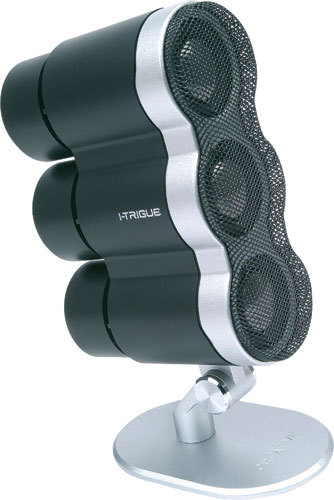Creative I-Trigue 3600: Big Ambitions, Small Design
Domesticated Micro Drivers?
Many manufacturers have chosen to use micro drivers to shrink down their satellite sizes. These devices are small loudspeakers that look like dome tweeters. Their advantage is that they're very small (generally 1" in diameter) and so are easy to use in very small satellite speakers. Several of them are required, since their small radiating area won't reproduce relatively low frequencies with enough volume. Still, such drivers are fundamentally better suited for reproducing high frequencies than midrange and bass. And you can generally hear the difference - the sound is more or less heavy on the highs and very often lacks punch in the midrange and low midrange.
It's hard to find solutions to these problems. To get enough energy in the midrange frequencies, the technique most often used is to couple several drivers. This works well enough, but don't forget that it has disadvantages. In the upper part of the spectrum (the extreme highs), interference is inevitable. To get around that you'd have to find a way to suspend the fundamental laws of acoustics, and nobody has done that yet - at least not in a consumer product. To better reproduce lower frequencies (in the low midrange), a sophisticated loading system can be used - a kind of bass-reflex approach, but operating at higher frequencies. Such solutions have been used in the past on professional products (like the midrange speakers on some Electro-Voice studio monitors).
That's the solution Creative says they've used for the 3600, with a kind of labyrinth-type rear load. In practice the three micro drivers are mounted in parallel. Since their nominal impedance is 12 ohms, the total value works out to a standard 4 ohms. The rear loading, despite appearances, is common to all three - the three cavities and their baffles communicate. This design is problematic with the micro drivers. The diameter of their voice coils is equal to that of the membrane. This means that the membrane area available for the rear load is very small or even non-existent. The suspension may enter into the picture, but still the volume of air being moved will necessarily be very small. This means you can legitimately ask whether the complex loading system will really have much effect on the response curve. We'll talk about that later when we get to the measurements.
Get Tom's Hardware's best news and in-depth reviews, straight to your inbox.
